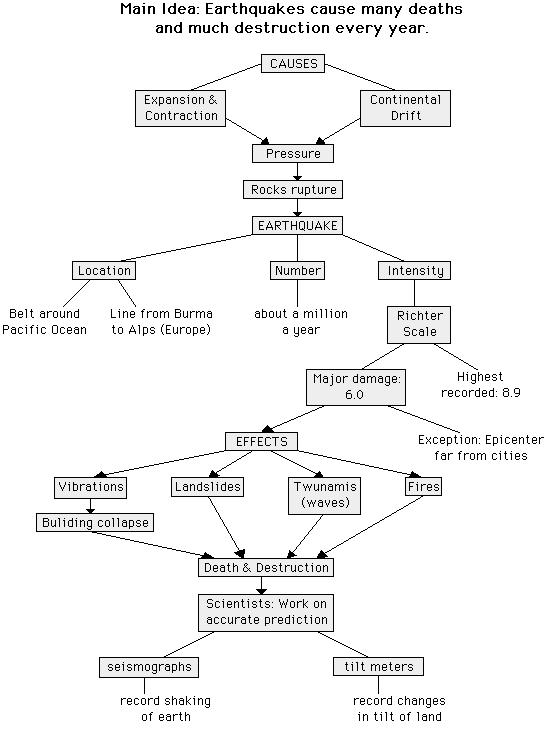Every year earthquakes are responsible for a large number of deaths and vast amounts of destruction in various parts of the world. Most of these damaging earthquakes occur either in a narrow belt which surrounds the Pacific Ocean or in a line which extends from Burma to the Alps in Europe. Some of the destruction is directly caused by the quake itself. An example of this is the collapse of buildings as a result of vibration. Other damage results from landslides, tsunamis (large ocean waves) or major fires which are initiated by the quake.
There are about a million quakes a year. Fortunately, however, not all of them are destructive. The intensity of an earthquake is measured on the Richter Scale, which goes from 0 upward. The highest magnitude recorded to date is 8.9. Major damage generally occurs from quakes ranging upwards from 6.0. Exceptions to this are those whose epicenters are located far from inhabited areas.
The actual cause of the quake itself is the rupturing or breaking of rocks at or below the earth's surface. This is produced by pressure which scientists believe may be due to a number of reasons, two of which are the expansion and contraction of the earth's crust and continental drift.
In order to minimize the damage and to alleviate some of the suffering resulting from earthquakes, scientists are working on ways to facilitate accurate prediction. Two of the instruments presently in use to achieve this goal are seismographs and tilt meters. The former record any shaking of the earth; by means of calculations seismologists can accurately indicate the exact time, location and size of an earthquake. The latter, as the name suggests, are used to record any changes in the tilt of the land.

 ශිල්ප 64
ශිල්ප 64